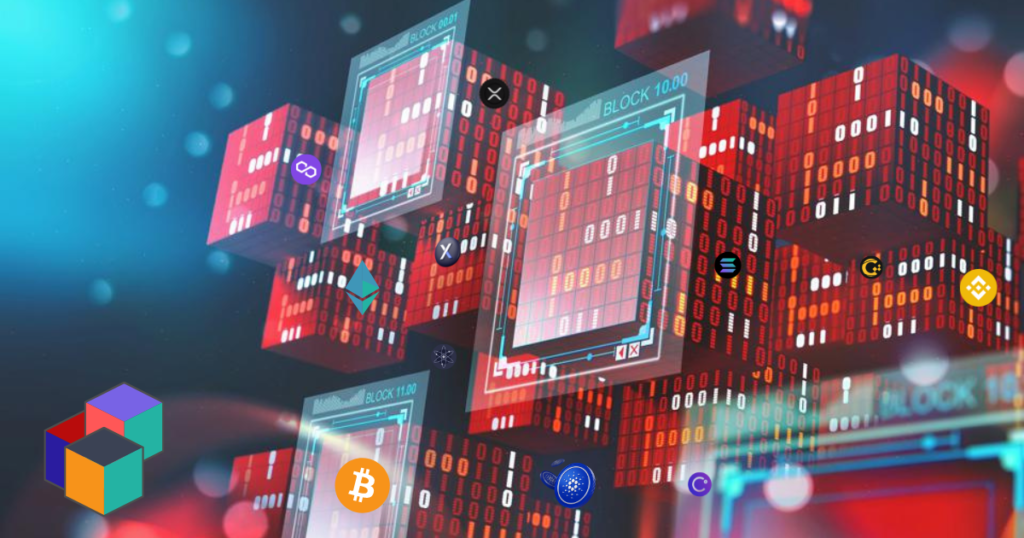A blockchain bridge is a technology that connects two blockchains to allow them to interact. A blockchain bridge will enable you to engage and Defi activities on the Ethereum network if you own bitcoin but do not want to sell it. Blockchain bridges are essential for achieving blockchain interoperability.
In this article, we’re going to learn about the blockchain bridges why we need them, what they are the different types, how they work, benefits versus risks, and what my thoughts are on them.
What is a blockchain bridge?
To comprehend what a blockchain bridge is you must first understand what a blockchain is. Some of the most significant blockchain ecosystems are bitcoin, Ethereum, and BnB smart chain, which all use consensus protocols programming languages, and system regulations.
A blockchain bridge is a mechanism that connects two economically and technologically distinct blockchains to allow them to interact. These protocols work like a physical bridge connecting two islands, with the islands representing independent blockchain ecosystems, thus blockchain bridges enable interoperability which means that the digital assets and data held on one blockchain can interact with those hosted on another. Interoperability is the foundation of the internet, machines worldwide communicate using the same set of open protocols. Blockchain bridges are critical in the blockchain environment where there are many separate protocols to enable similar ease of exchanging data and value.

What is the purpose of blockchain bridges?
As it matured and expanded one of the significant drawbacks of the blockchain sector has been the inability of multiple blockchains to collaborate. Each blockchain operates under its own laws, coins, protocols, and smart contracts. Blockchain bridges help to break down these silos and connect the fragmented crypto ecosystems. Tokens and data can be easily traded between blockchains via an interconnected network. Blockchain bridges provide other benefits in addition to enabling cross-chain transactions. They let consumers access new protocols on other chains while allowing developers from various blockchain communities to collaborate. In other words, blockchain bridges are essential to the blockchain industry’s interoperable future.
How do blockchain bridges work?
The token transfer is the most prevalent use case for a blockchain bridge. For instance, suppose you want to move your bitcoin to the Ethereum network one option is to sell your bitcoin and buy ether or eth. This however would result in transaction fees and expose you to price volatility. Using a blockchain bridge you can also achieve this goal without selling your cryptocurrency. When you bridge one BTC to an Ethereum wallet a blockchain bridge contract locks your BTC and generates an equivalent amount of wrapped BTC or WBTC. This erc20 token is interoperable with the Ethereum network. The amount of BTC you want to move is locked in a smart contract and equal permits are issued or minted on the destination blockchain network.
A wrapped token is a cryptocurrency that has been tokenized, it’s linked to the value of the asset it represents and can generally be redeemed or unwrapped at any time. This method involves a few steps from the standpoint of the user. To utilize the Binance bridge for example you must first select the chain from which you want to bridge and then indicate the amount. The cryptocurrency will subsequently be deposited to an address generated by Binance bridge. The Binance bridge will deliver you an equivalent quantity of wrapped tokens on the other blockchain after the crypto is sent to the address during the time window. If you want to convert your funds back repeat the process.
Related: How does blockchain works? Blockchain Explained
What kinds of bridges exist?
Blockchain bridges are classified based on their functions, procedures, and degrees of centralization.
Custody and non-custody
One famous classification divides blockchain bridges into custodial or centralized and non-custodial or decentralized. Custodial bridges require users to trust the central entity for the system to function correctly and safely. Users should conduct comprehensive research to determine that this entity is reliable. Non-custodial bridges are decentralized, depending on smart contracts to control the crypto locking and minting operations eliminating the need to rely on a bridge operator. In this instance, the system’s security is only as good as the underlying code.

Functionality of bridges
A different classification is based on how a blockchain bridge functions. Examples include sidechain bridges and wrapped asset bridges.
Wrapped asset bridges
Wrapped asset bridges facilitate crypto interoperability by binding bitcoins into wrapped BTC or WBTC. An erc20 token is interoperable with the Ethereum network.
Sidechain bridges
Sidechain bridges connect the parent blockchain to its kid’s side chain, allowing the two to communicate. They are required because the parent and sidechain consensus algorithms may differ.
One example is x bridge which connects the Ethereum main nip to NASA’s chain, previously xDai blockchain. A reliable payment side chain built on Ethereum. xDai is protected by a distinct set of validators from those that keep the Ethereum network running. The value transfer between the two chains is facilitated by the xDai bridge.
Mechanisms for blockchain bridges
Bridges can be either one-way or unidirectional or two-way or bi-directional. A one-way bridge means users can only bridge assets to one blockchain destination no back support can be bridged in both directions using two-way bridges.
Related: What Is The Blockchain Trilemma?
Advantages of blockchain bridges
The capacity to promote interoperability is the most crucial feature of blockchain bridges. They allow the exchange of tokens assets and data between blockchains, whether between layer 1 and layer 2 protocols or between separate side chains.
For example, WBTC allows bitcoin users to explore the Ethereum ecosystem’s decentralized applications or Dapps and Defi services an interoperable blockchain sector is vital to the industry’s future development.
Another benefit of blockchain bridges is that they boost scalability. Some blockchain bridges can handle a massive number of transactions at the same time increasing efficiency. For instance, a decentralized two-way bridge that helps the Ethereum network scale is the Ethereum polygon bridge. Users will benefit from speedier transactions and cheaper transaction costs as a result.
Dangers of blockchain bridges
On the other hand blockchain, bridges do have some limits. Attackers have taken advantage of flaws in the smart contracts of several blockchain bridges. Massive amounts of cryptocurrency have been stolen by malicious actors from cross-chain bridges. Users may be exposed to custodial dangers when using custodial bridges. A centralized body operating behind a custodial bridge might hypothetically steal money from users. When purchasing custodial bridges look for well-known manufacturers with a proven track record.

Transaction rate bottlenecks are another potential technical barrier. The throughput capacity bottleneck of a single chain could stimmy large-scale blockchain interoperability. While a bridge can help relieve congestion on a busy network shifting assets to another chain does not solve the scalability problem because consumers will not always have access to the same collection of Daps and services.
Some Ethereum Dapps for example are unavailable on the polygon bridge limiting their scaling efficacy. Finally, blockchain bridges may expose the underlying protocols to dangers associated with trust disparities because blockchain bridges connect distinct blockchains the network’s overall security is only as strong as its weakest link.
Related: What is Layer 1 Blockchain? | Layer 1 Blockchain Explained
What are the prospects for blockchain bridges?
Because of its tremendous interoperability, the internet is a revolutionary system. Blockchain bridges are crucial to increasing the interoperability and broad adoption of the blockchain sector. They have enabled critical advancements allowing users to swap assets across multiple blockchain protocols. The number of blockchain bridge users and total transaction volume has all increased dramatically.
As the internet transitions to 3, the demand for blockchain bridges will likely increase. Future advancements may provide users and developers with more scalability and efficiency. Innovative solutions to the security problems associated with bridges may exist. Blockchain bridges are critical to establishing an interoperable open decentralized blockchain environment.
Conclusion
The blockchain industry is expanding as a result of ongoing innovation. The pioneer protocols such as the bitcoin and Ethereum networks are followed by a plethora of alternative layer 1 and layer 2 blockchains. The number of cryptocurrencies and tokens has exploded. They require blockchain bridges to connect their various policies and technologies. A blockchain ecosystem connected by bridges is more coherent and interoperable allowing for greater scalability and efficiency.
Related: Top Blockchain Use Cases
However, due to the fact, there have been several attacks on cross-chain bridges researchers are looking for a more secure and resilient bridge architecture. As always I hope you got value from this article, so I’m curious what did you learn about blockchain bridges? Leave a comment below you know some people might think we’re weird trying to understand consensus protocols, programming languages, and system rules but there’s a famous quote from Stephen hawking
“the thing about smart people is they sound crazy to dumb people”

